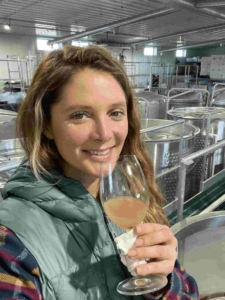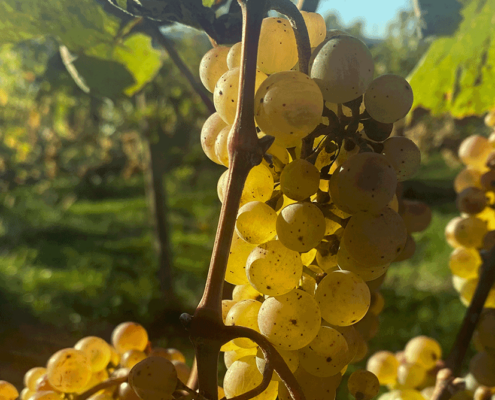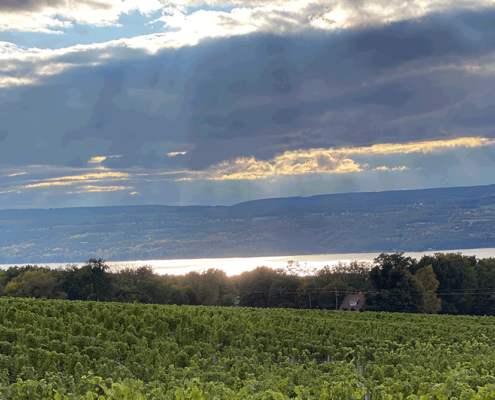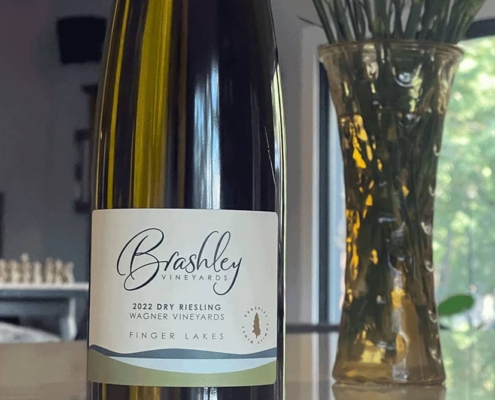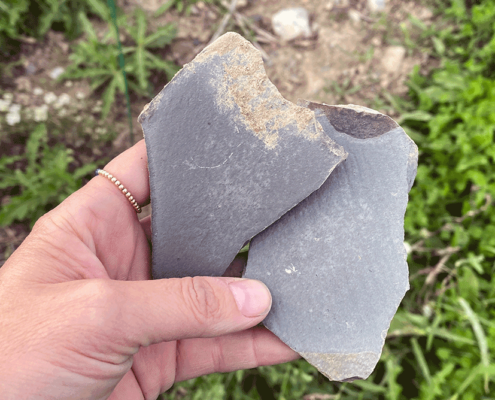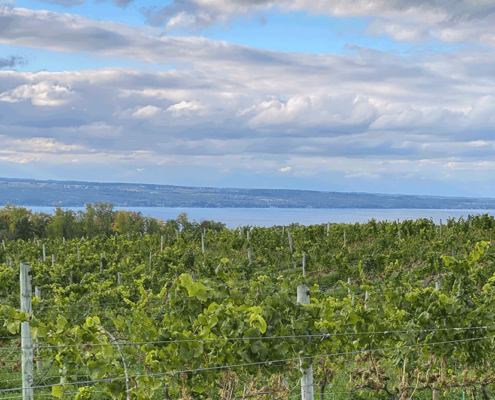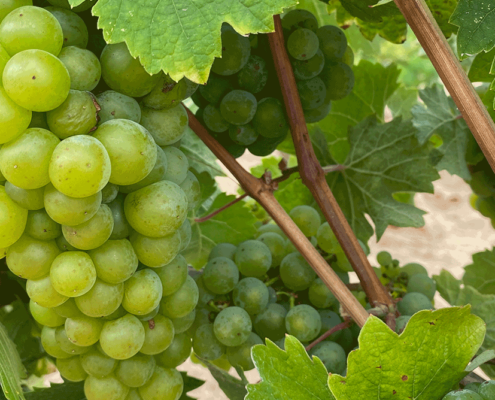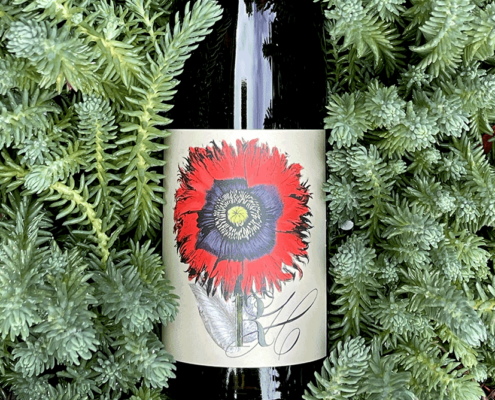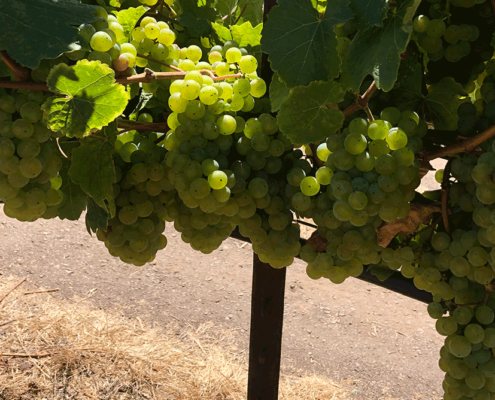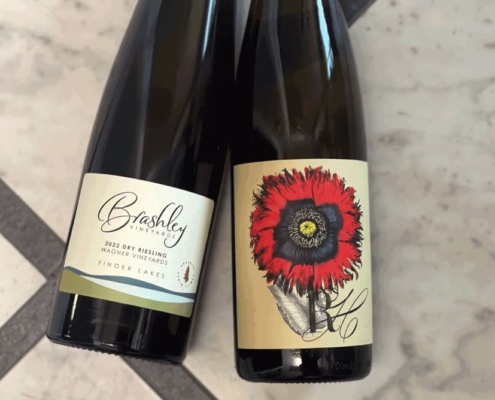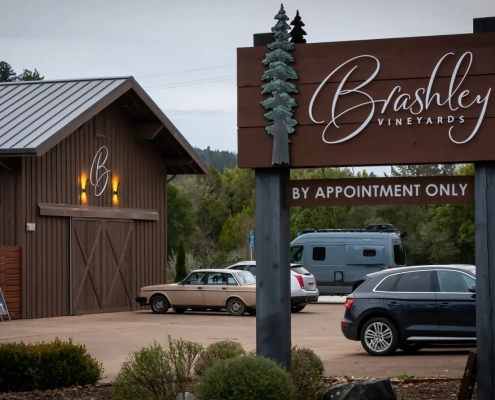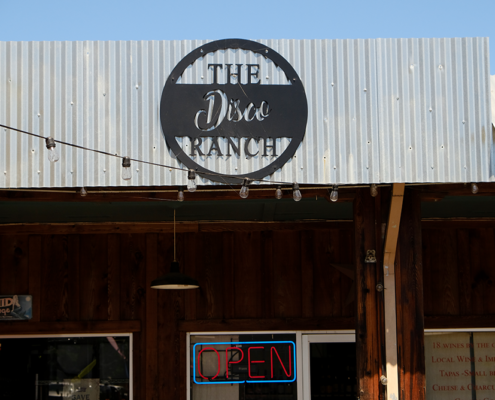California Riesling Wine: Anderson Valley’s Hidden Gem
Ashley returned to the United States after an opportunity arose to work with renowned winemaker Bob Cabral at Three Sticks Wines in Sonoma County, owned by Bill Price III. She eventually made her way to Anderson Valley, where she learned about the region’s rich history of Riesling. She also developed a deep love for the Pinot Noir produced in the region, which reminded her of the styles created in New Zealand’s Awatere Valley. After seeing Anderson Valley’s ideal grape-growing conditions and finding an old Riesling vine block at Boonville’s Wiley Vineyard, she determined that the Anderson Valley AVA was the perfect place to produce more of the varietal.
The Versatility of Riesling Wine: From Dry to Sweet Styles
“It’s the Swiss Army Knife of wines,” Ashley noted of Riesling, highlighting the white wine’s versatility and adaptability, the latter of which makes Riesling grapes especially fascinating and fun to work with in different regions.
Finger Lakes New York Riesling Wine: A Cool Climate Classic
In the Finger Lakes, for example, the “budbreak,” or the part of the growing process where the vines swell and open, takes place much earlier than in California. The Continental climate of the region is also more extreme, with rain, disease, air pressure and squalls all contributing to winter die-off and creating other challenges for growers. Anderson Valley, meanwhile, has more of a Mediterranean climate and sees minimal, if any, rain during the growing season.
The Role of Terroir in Crafting Riesling’s Flavor Profiles
How do these varying conditions contribute to the flavor profiles of the wine produced in each area?
“California Riesling leans into ripe fruit and lush textures, showcasing sun-kissed vibrancy,” Ashley said. She noted that while California winemakers sometimes face over-ripeness, Finger Lakes producers are more likely to encounter under-ripe conditions. “Seneca Lake Riesling reflects its cool climate with laser-like acidity, delicate minerality and a nuanced sense of place shaped by glacial soils.”
Ashley is careful to note that, despite these distinctions, both wines are equally impressive.
“Riesling is such a barometer of the climate and soil it’s grown in…It’s a ‘zebra versus a horse’ comparison,” she noted. “It reminds me of Chardonnay in that there are so many different styles. If people don’t like it, they just haven’t found their style yet; there truly is something for everyone.”
Perfect Food Pairings for Riesling Wine
Regardless of where she’s making Riesling, Ashley aims to create wines with a distinct texture and mouthfeel. She finds that, in the Finger Lakes, the phenolic compounds and flavors extracted from the grape’s skin contribute substantially to the character of the Riesling produced for Brashley Vineyards. In Anderson Valley, meanwhile, the “lees,” or the dead yeast cells and other particles that remain after wine fermentation, make Ashley’s Read Holland Rieslings especially distinctive.
The varied flavors and unique characteristics of Riesling have made it increasingly popular among white wine fans in recent years, and Ashley’s favorite food pairing suggestions for Riesling include Choucroute, roast chicken, pork belly, crab and charcuterie boards. As more enthusiasts opt for white wines, Riesling continues to cement itself a top choice for tables from coast to coast.
Riesling in Anderson Valley: A Rare and Remarkable Experience
While both the Finger Lakes region and Anderson Valley have established themselves central to the United States’ Riesling renaissance, the increasing scarcity of these grapes in Anderson Valley (estimates suggest that there are about 25 acres dedicated to Riesling production remaining in the AVA) makes the Riesling wines produced there that much rarer and more remarkable. There is, however, a renewed interest in revisiting Riesling in the region – but the process requires patience and pre-planning, as it can take years for the vines to start producing and yielding returns. Until more plantings become available, Brashley Vineyard will continue to work with Ashley Holland to make her Riesling from her home region, the New York Finger Lakes.
Find Read Holland Riesling Online or at the Boonville Disco Ranch and Brashley’s Finger Lake Riesling Wine at their Philo Tasting Room


